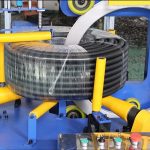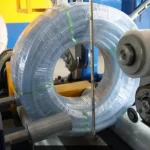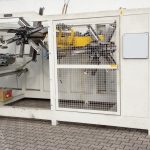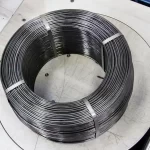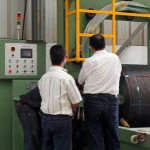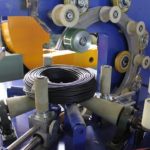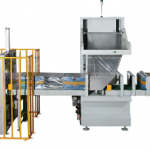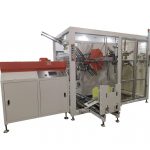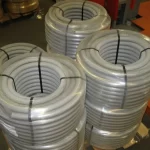cable coil strapping machine and shrinking machine
Fhope provides semiauto and automatic cable packaging solution for unmanned production. There is automatic cable packaging line including cable counting, cable coiling and cable winding and automatic cable coil wrapping machine with logo feeding.
Automatic packing solution for unwiding machine+coiling machine+strapping machine+shrinking solution: please contact with our team…
** Cable Coiling, Strapping and Shrinking: A Multi-Functional Solution **
Cable coil strapping machines and shrinking machines provide an all-in-one bundling solution for your cable products. They coil, strap and shrink wrap cable coils for safe and secure handling while maximizing coiling density and efficiency.
** Precise coiling for optimum material use**
Cable coil strapping machines use strong tension control to coil cables into tight circles of consistent diameter and layer thickness. This enables stacking more coils per pallet, reducing warehousing costs. Proper coiling also prevents damage and ensures cables retain shape and properties.
** High-strength strapping for tamper-proof bundling**
Stainless steel or polypropylene strapping is wrapped tightly around the coils and securely crimped or heat-sealed. Strapping provides a strong yet flexible binding that withstands the stresses of storage, transit and use without damage or unraveling.
** Shrink wrapping for weather-resistant coverage**
Shrink tubing or heat-shrink polyolefin film is wrapped around the strapped coils and heated to firmly bind the bundling in place and seal out environmental contaminants. Shrink wrapping provides 360-degree weather-resistant coverage and allows for clearly marking and labeling the coils.
** Improved efficiency, reduced costs**
Bundling machines automate previously manual processes, resulting in significant productivity gains, output maximization and cost optimization. Lower manpower needs and wastage translate into cost savings on labor, materials and operational expenses. Minimal maintenance needs further reduce lifetime costs.
** Reliable, high-speed bundling solutions**
Cable coil strapping machines and shrinking machines are robust, durable and built to high standards. Complex yet solid-state mechanical designs ensure high reliability, speeds of 100 coils/hour and minimal unplanned downtime. Easy serviceability and low spare part costs enhance uptime.
Improved safety, reduced damage
Secure bundling prevents coils from unraveling, slipping or getting damaged during handling and transit. This reduces waste, ensures VOC compliance and improves working conditions. Proper bundling also allows for safer stacking and transportation of coils.
In summary, cable coil strapping machines and shrinking machines provide a fast, economical and reliable solution for bundling your cable coils. Robust coil bundling, efficient material use, cost optimization, safety and reduced damage work together to maximize your productivity, profits and business success. Comprehensive bundling with strapping and shrinking helps future-proof your logistics and strengthen your brand value.
